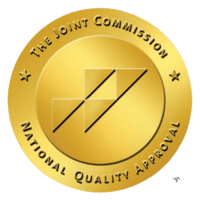Naltrexone, a medication commonly used in the treatment of alcohol use disorder and opioid dependence, presents a complex landscape regarding its duration of effectiveness. Its oral formulation requires daily dosing due to a half-life of approximately four hours, while the extended-release injectable form can sustain its effects for up to 30 days. However, the effectiveness of Naltrexone is not solely determined by its formulation; individual metabolic rates and health conditions also play critical roles. Understanding these nuances is essential, yet many questions remain about the ideal use and long-term implications of this treatment. For more information on detox programs that incorporate such treatments, see our detox program details.
What Is Naltrexone?
Naltrexone is a medication primarily used in the treatment of alcohol use disorder and opioid dependence. Its primary mechanism of action involves blocking the opioid receptors in the brain, which helps to reduce cravings for alcohol and opioids, facilitating abstinence and recovery. Naltrexone offers several notable benefits for individuals undergoing treatment for substance use disorders. By mitigating cravings and reducing the likelihood of relapse, it supports patients in maintaining sobriety. Additionally, Naltrexone administration can be conducted via oral tablets or an extended-release injectable form, allowing for flexible treatment options tailored to individual patient needs. The oral formulation is typically prescribed to be taken daily, while the injectable form is administered monthly, providing convenience and enhancing adherence to the treatment regimen. For an overview of the available treatment options, visit our programs page.
Duration of Effectiveness
The duration of effectiveness of Naltrexone varies based on the formulation used and individual patient factors. Oral Naltrexone has a half-life of approximately four hours, necessitating daily dosing to maintain therapeutic levels, whereas the extended-release injectable formulation can last up to 30 days after administration. Duration monitoring is critical in determining the appropriate treatment regimen. Clinicians often assess the effectiveness of Naltrexone through regular follow-ups, which may include evaluating the frequency of substance use, cravings, and overall patient well-being. Variability in individual patient factors, such as metabolism and concurrent medical conditions, can influence how long Naltrexone remains effective. Consequently, ongoing communication between the patient and healthcare provider is essential for optimizing treatment outcomes. For a detailed understanding of Naltrexone and its receptor blocking capability, refer to this article on the duration of opiate receptor occupancy by Naltrexone.
Factors Influencing Effectiveness
Several factors can influence the effectiveness of Naltrexone in treating alcohol and opioid dependence. Individual biological differences, such as genetic variations in drug metabolism, can considerably impact how well patients respond, necessitating personalized treatment options. Additionally, the timing of administration in relation to substance use can affect outcomes, with ideal results when taken consistently, ideally after a period of abstinence, to maximize therapeutic potential. Psychological and social factors, including a strong support system and personal motivation, can enhance effectiveness. Experiences, such as counseling or support groups, may make Naltrexone more beneficial by addressing underlying behavioral issues. To explore more about how modalities can enhance treatment outcomes, view our treatment modalities.
Long-Term Use Considerations
Long-term use of Naltrexone in the treatment of alcohol and opioid dependence requires careful consideration of factors to guarantee sustained effectiveness and patient well-being. Regular medical evaluations are critical to monitor any long-term effects such as gastrointestinal issues, liver function alterations, potential psychological impacts, and assure ideal dosing. Naltrexone can be combined with psychosocial interventions, such as cognitive-behavioral therapy, to enhance long-term outcomes, addressing behavioral issues alongside pharmacological benefits. Patients must be educated about adherence to prevent diminished effectiveness and increased relapse risk, with healthcare providers prepared to adjust treatment plans as necessary. Ultimately, with support and ongoing evaluation, Naltrexone offers an effective strategy for managing alcohol and opioid dependence. Evidence-based recommendations on the optimal duration of Naltrexone treatment can guide improving outcomes.

Final Thoughts
In conclusion, the effectiveness of Naltrexone is contingent upon its formulation and individual patient factors, with the oral version requiring daily administration and the extended-release injectable providing a prolonged effect of up to 30 days. Variations in metabolism, health status, and administration timing greatly impact its efficacy. Continuous monitoring and the establishment of robust support systems are essential to optimize Naltrexone’s benefits in managing alcohol use disorder and opioid dependence, ensuring improved treatment outcomes for patients.
At BlueCrest Detox, we’re dedicated to elevating you from the struggles of substance use to the peaks of recovery and resilience. Our expert team offers personalized, evidence-based treatment services tailored to support your unique journey toward healing. Reach out to us for the compassionate care you deserve on your path to wellness. Follow us on Facebook for ongoing support, insights, and inspiration on your recovery journey.
Frequently Asked Questions
Can Naltrexone Cause Withdrawal Symptoms if I Stop Taking It Suddenly?
Naltrexone is an opioid antagonist used primarily in the treatment of alcohol and opioid dependence. While discontinuing naltrexone abruptly may not typically lead to withdrawal symptoms associated with opioid dependence, individuals may experience psychological effects or cravings. Effective withdrawal management is essential for those seeking to shift off naltrexone. It is recommended to consult with a healthcare professional prior to making any changes to medication regimens to guarantee a safe and supportive process.
Is Naltrexone Safe to Use With Other Medications?
Naltrexone interactions with other medications can vary markedly based on individual health profiles and specific drugs involved. It is vital to consult a healthcare professional before combining naltrexone with any other medications to guarantee medication compatibility. Certain medications may enhance or diminish naltrexone’s efficacy or increase the risk of adverse effects. A thorough review of all current medications, including over-the-counter drugs, is important for safe and effective treatment planning.
How Quickly Does Naltrexone Start Working After Administration?
Naltrexone is administered to help manage alcohol and opioid dependence. Regarding naltrexone onset, its effects typically begin within one hour after oral administration, while the duration of action can last up to 24 hours. This pharmacological profile allows for sustained therapeutic effects, aiding individuals in reducing cravings and preventing relapse. Understanding the onset and duration is essential for effective treatment planning in substance abuse programs, ensuring best patient outcomes.
Can I Consume Alcohol While on Naltrexone?
Consuming alcohol while on Naltrexone is not advisable. Naltrexone is designed to reduce alcohol cravings and help individuals maintain sobriety. Alcohol interactions can diminish the medication’s effectiveness and may lead to heightened cravings or potential relapse. In addition, combining alcohol with Naltrexone may result in an increased risk of adverse effects. It is essential for individuals in recovery to consult healthcare professionals for personalized guidance regarding alcohol consumption during Naltrexone treatment.
Are There Specific Side Effects Associated With Naltrexone Use?
Naltrexone side effects can vary among individuals and may include nausea, headache, dizziness, and fatigue. While many users tolerate the medication well, some may experience more severe reactions, such as liver function alterations or allergic responses. Long term effects of Naltrexone are still being studied, but it is essential for patients to regularly consult their healthcare provider to monitor any adverse reactions and assess the medication’s ongoing effectiveness in managing alcohol or opioid dependence.




